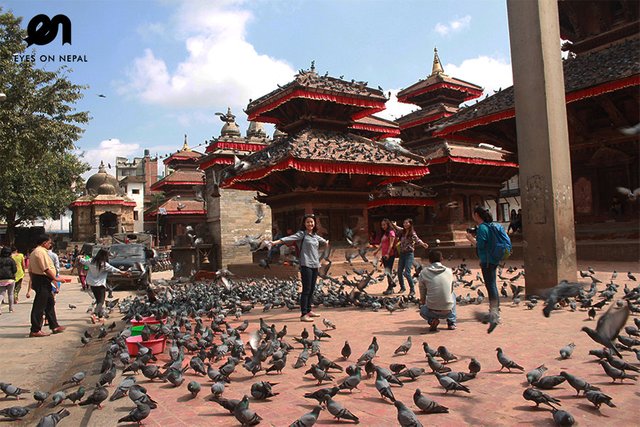NEPAL, A BEAUTIFUL COUNTRY

Mount Everest, known in Nepali as Sagarmatha (सगरमाथा) and in Tibetan as Chomolungma (ཇོ་མོ་གླང་མ), is Earth's highest mountain above sea level, located in the Mahalangur Himal sub-range of the Himalayas. The international border between Nepal (Province No. 1) and China (Tibet Autonomous Region) runs across its summit point.

The two climbers named Apa Sherpa and Phurba Tashi hold the joint record for most Everest ascents. The team has each managed to reach the summit an impressive 21 times. Phurba reached the top of the world three times in 2007 alone, and Apa has successfully summited the mountain almost every year between 1990 and 2011.
Apa Sherpa and the Phurvba Tashi are the two climbers who climb the highest peak(Mount Everest) 21 times.

World Heritage site is a semi-circle shaped Stupa which supposedly contains the relics and remains of Buddha. Every part of the monument’s architecture has an abstract spiritual meaning. Every portion has symbolic significance: the base, dome, square Harmika, spire, and pinnacle represent the five elements; the 13 tiers of the spire stand for the stages to enlightenment, while the umbrella atop is the symbol of royalty. Many small Stupas, statues and colorful Tibetan prayer flag surround the huge Stupa. Boudhanath is one of the most beautiful Buddhist shrines and cultural heritages of Nepal.
Many experience the spiritual peace as they do their a ritual circumnavigation of the dome, beneath the peaceful wisdom eyes of the Buddha, which gaze out from the gilded central tower.


Kathmandu’s Durbar Sq was where the city’s kings were once crowned and legitimised, and from where they ruled (durbar means palace). As such, the square remains the traditional heart of the old town and Kathmandu’s most spectacular legacy of traditional architecture. The square bore the brunt of Kathmandu's 2015 earthquake damage. Half a dozen temples collapsed, as did several towers in the Hanuman Dhoka palace complex, but it's still a fabulous complex. Reconstruction will continue for years.
Although most of the square dates from the 17th and 18th centuries (many of the original buildings are much older), a great deal of rebuilding happened after the great earthquake of 1934. The entire square was designated a Unesco World Heritage Site in 1979.
The Durbar Sq area is actually made up of three loosely linked squares. To the south is the open Basantapur Sq area, a former royal elephant stables that now houses souvenir stalls and off which runs Freak St. The main Durbar Sq area is to the west. Running northeast is a second part of Durbar Sq, which contains the entrance to the Hanuman Dhoka and an assortment of temples. From this open area Makhan Tole, at one time the main road in Kathmandu and still the most interesting street to walk down, continues northeast.
source :- different sites and google ...reasearch...thank you
